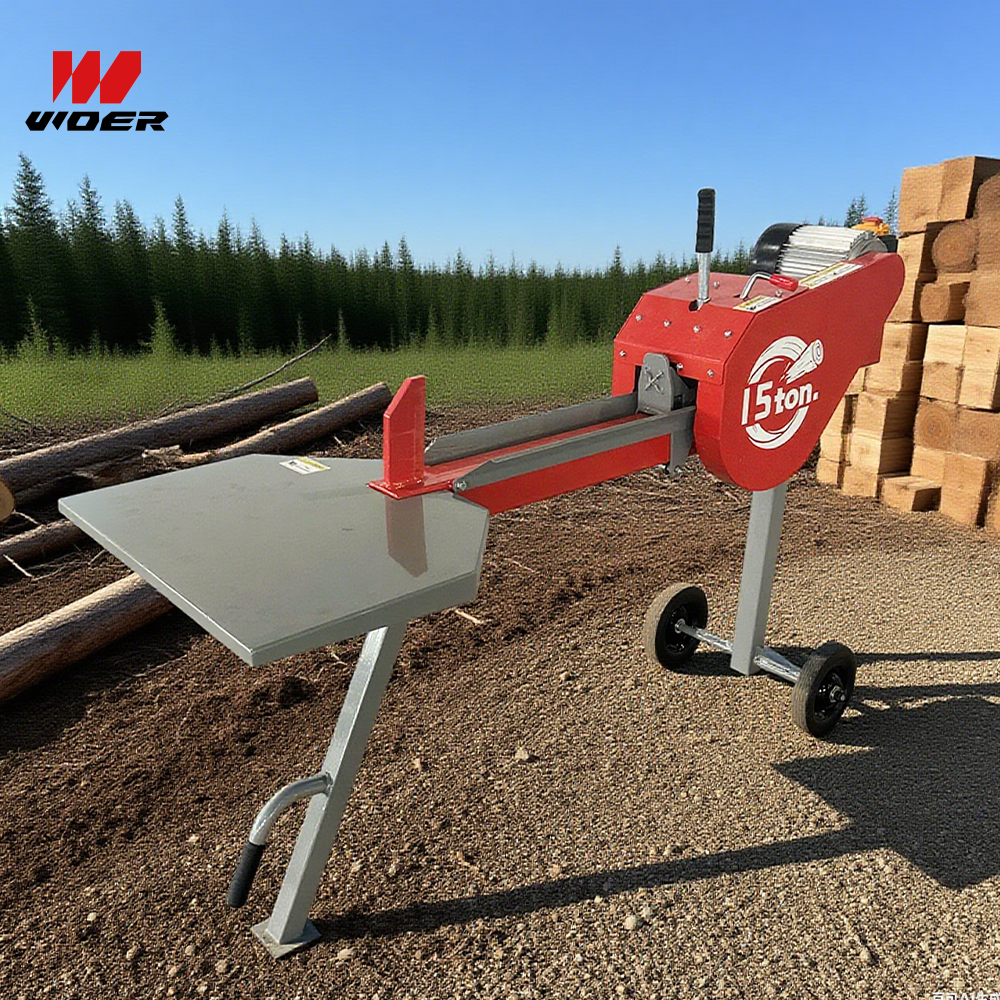Navigation
Contact us
Phone
Message

How Does a Wood Splitter Handle Different Types of Wood?
1. Can a wood splitter handle both softwood and hardwood?
Yes. Most modern wood splitters are designed to process both softwood (pine, spruce, fir) and hardwood (oak, maple, beech). However, the required splitting force depends on the wood’s density and moisture content.
2. How does a wood splitter perform with softwoods?
Softwoods are generally easier to split. Even small electric splitters (4–7 tons of force) can handle pine or spruce efficiently, making them ideal for home and light-duty use.
3. What about hardwoods such as oak or maple?
Hardwoods require significantly more force due to their density and grain patterns. Hydraulic splitters with higher tonnage (10–30 tons or more) are recommended for consistent and efficient results.
4. Does moisture content affect splitting?
Yes. Freshly cut (green) wood contains higher moisture, making it tougher to split. Seasoned wood, with lower moisture content, is easier to process and less demanding on the machine.
5. Can a wood splitter process twisted or knotty logs?
Knotty or irregular logs are more difficult to split. Using a high-tonnage hydraulic splitter and a wedge with a wider angle ensures better results and prevents equipment strain.
6. What type of wedge is best for different woods?
Straight wedge: Effective for clean, straight-grain wood.
Four-way or cross wedge: Ideal for softwood, allows multiple splits in one pass.
Heavy-duty wedge: Best for knotty hardwood, as it provides extra force and durability.
7. Are there size limits for different wood types?
Yes. Each wood splitter has a maximum log length and diameter capacity. Larger, denser hardwood logs may require industrial-grade splitters, while smaller models suit backyard firewood tasks.
8. What’s the risk of using the wrong splitter for the wood type?
Using an underpowered splitter on hardwood or oversized logs can strain the motor or hydraulic system, shorten machine lifespan, and even cause safety hazards.

This stunning beach house property is a true oasis, nestled in a serene coastal community with direct access to the beach.
Contact
West Street, Melbourne Victoria 3000 Australia